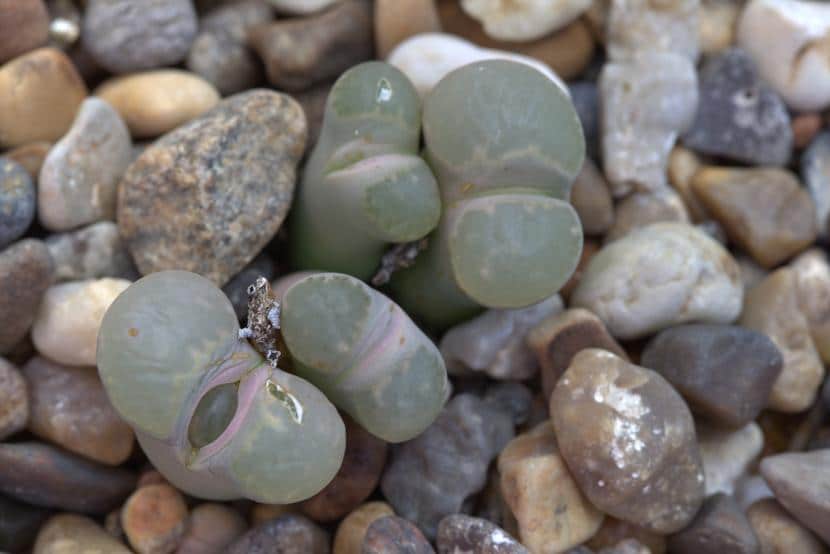
Lithops weberi
The Lithops They are by far some of the best known succulent plants in the world. They do not have leaves like other plant beings, but as they evolved they have been transformed into what many people say "buttons" from whose center a beautiful yellow or white flower emerges.
Its growth is slow, which added to its small size make it a succulent not suitable, but perfect to have in a pot during all his life.
Lithops is a genus of succulent plants belonging to the botanical family Aizoaceae native to Southern Africa described by Nicholas Edward Brown and published in The Gardeners' Chronicle in 1922. So far, a total of 109 species have been accepted, the following being some of the most popular:
Lithops lesliei

Lithops optic

Lithops salicola

Due to their kinship, they receive the common names of living stones or stone plant. But why are these plants so special? Well, Lithops are known as "window plants." What does this mean? Well, unlike the rest of the plants, on the surface of the leaves there are small transparent or translucent areas without chlorophyll through which sunlight passes, thus reaching the interior of each leaf where finally the succulent can photosynthesize; that is, converting the energy of the star king into starch and sugars in order to feed itself and stay alive.
Its precious flowers They are very reminiscent of those found in daisies, but much smaller, barely 1 centimeter in diameter. Depending on the species, they can sprout either in late summer or in autumn, but every year you can contemplate and enjoy them 😉.

Lithops aucampiae
Lithops are very easy to grow plants, as all they need is a very bright exposure, a very porous substrate that drains water well -like the cheek for example- and few risks (In general, they should be given water twice a week in summer and every 15 days the rest of the year). To avoid problems, let the substrate dry completely before watering again, and do not put a plate under it so that it does not rot. What's more, from spring to summer you have to pay it with Nitrofoska Azul, adding a small spoonful every 15 days, or with liquid fertilizers for cacti and crassas following the instructions specified on the package.
During the rainy season, or if you live in a humid area, you must protect them against snails and slugs, either with molluscicides in grain, or with natural remedies such as beer or diatomaceous earth. Other options are simply taking them and taking them to a minimum distance of 600 meters, or putting a mosquito net as if it were a greenhouse.

Lithops gracililineata subsp. brandbergensis
Otherwise, you do not need a transplant as long as it is paid for, and It can be grown outside all year long if the temperature does not drop below -2ºC..